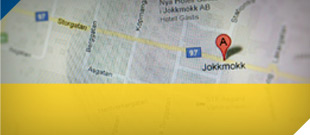A Royal Decision
During the Middle Ages the Sámi had acquired economic well-being based on trade with skins and leather goods. The Sámi were integrated in a network of trading contacts, dominated by the German Hanseatic League with ties to merchants in Novgorod and Moscow. Their leather goods were coveted by traders. At the end of the 15th century the trading towns were weakened and the expanding royal powers of Sweden-Finland and Denmark-Norway fought with Russia over the dominance of the area around the Arctic Ocean. It became important to strengthen control over the Lappish territories, both to safeguard the borders of the country in the north, as well as to tax an area rich in natural resources. The Swedish royal power's trading policy aimed at having all trade go through the customs in Stockholm, the so-called Bothnian Trade Coercion which was in effect until 1765.
In writings dated from around the turn of the 17th century the Swedish king Carl IX expressed concern about the welfare of the population of the Lappish territories. In 1602 he undertook a journey around the Gulf of Bothnia. Already in 1599 the king had given his bailiff Daniel Hjort the assignment of finding places which would be appropriate as church and market locations, at least one in every Lappish area. The Sámi were seen as being at the mercy of the tax collectors as well as living in spiritual darkness. They were also hard to keep track of--they were not settled down in one place. The crown wanted to take control of the Sámi and of the "birkarl" tax collectors.
By establishing permanent marketplaces and building churches in the Lappish territories during the first few years of the 17th century, the northern part of the country could be secured and the population would become more closely tied to the Swedish royal power. The tax collectors and the merchants from the coast lost their right to freely trade in Lappish territories and were allowed only to trade during the established market days. Taxes were to be collected directly by the crown's own officials. At the beginning many of these officials were the former tax collectors who knew the language, the conditions and had contacts from earlier on with the Sámi. Only after the crown had collected its taxes could the market trading begin. By attaching a Lutheran pastor to the church located in the market towns, at least the Word of God would be heard a few times a year.












